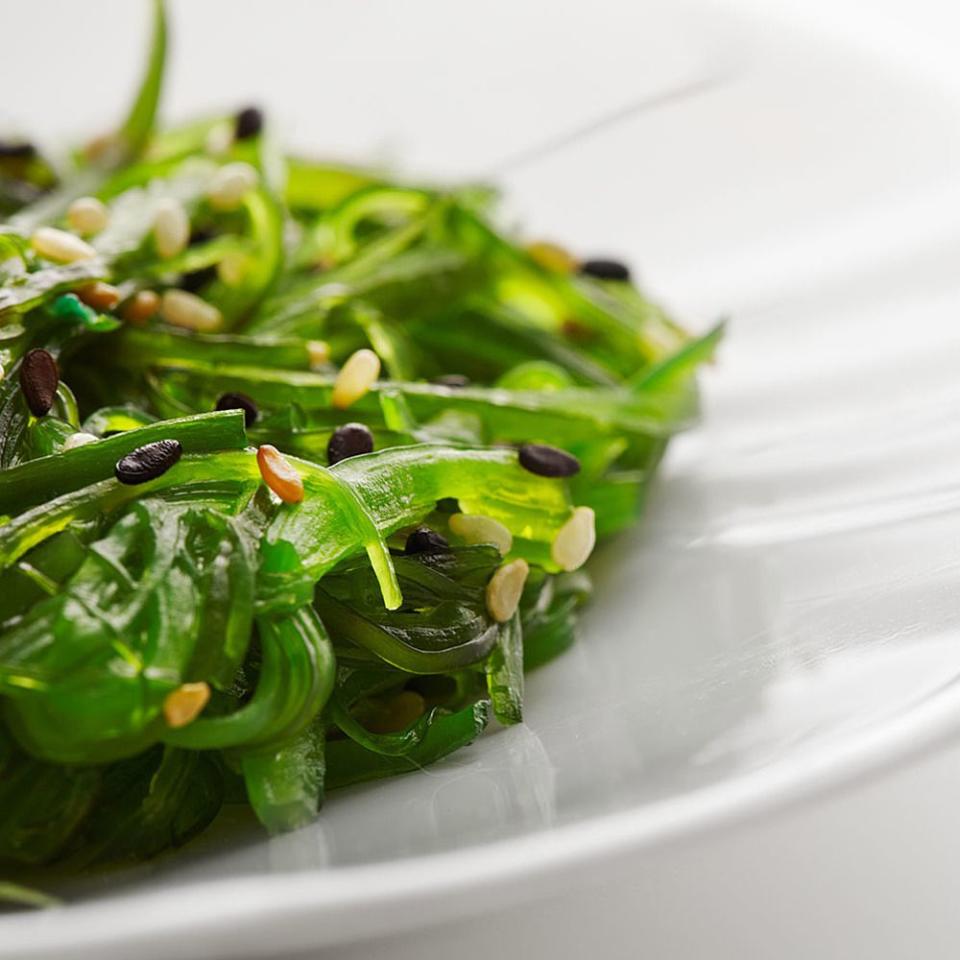Are Sea Vegetables the Superfood Missing from Your Kitchen?
They're not fishy, and they'll add a kick of nutrients to any dish they're added to.

You know about the seaweed that keeps your sushi together, but it's not the only sea plant in the ocean that has major health benefits. Other varieties include dulse, nori, wakame, agar agar, arame, sea palm, spirulina, and kombu.
:Irish Sea Moss Benefits That Make It a Legit Superfood
Now, big-name brands are getting in on the ocean action, with companies such as Naked Juice and drinkable greens brand Athletic Greens incorporating the superfood into products. Spirulina is one of the ingredients in Athletic Greens' AG1, and dulse, a type of red seaweed that includes high levels of the micro-minerals copper, magnesium, and iodine, made its way into a Naked Juice blend called Sea Greens Juice Smoothie.
"One bottle of the juice actually contains 60 percent of your recommended daily intake for iodine, which is critical for a healthy thyroid, the gland that controls your body's metabolism and is also responsible for proper bone and brain development during pregnancy and infancy," says Lindsey Toth, R.D., a Chicago-based nutritionist who works with Naked Juice.
Why You Should Eat Sea Vegetables
Edible seaweeds have long been a staple in Asian cultures, and they still play a role in the local dietary guidelines, explains Toth. "Sea veggies are a nice source of chlorophyll and dietary fiber, plus they have a pleasant salty flavor which comes from a balanced combination of sodium, potassium, calcium, phosphorus, magnesium, iron, and other trace minerals naturally found in the ocean," adds Molly Siegler, a food editor and the director of operations and development at House of Kajaana.
:These Benefits of Fiber Make It One of the Most Important Nutrients In Your Diet
Another reason to add sea vegetables to your diet: Iodine, which is vital for all the reasons mentioned by Toth. The essential mineral is found in many types of fish, dairy products, and iodized salt, but if you follow a mostly plant-based diet, sea vegetables are a great source of iodine.
Where to Buy Sea Veggies
It's much easier to find sea vegetables than it used to be, partially because they are being harvested in the U.S. now, making them more accessible and less expensive, explains Toth. Sea veggies are not usually found raw but dried, and you can look for them in the international food aisle of your grocery store, recommends Siegler. Drying the seaweed after harvesting helps to preserve the nutrients. When it's time to eat, either rehydrate it with water or use the dried form as is. You can also find kelp noodles and some rehydrated varieties of sea greens in the cold dairy section, says Siegler.
How to Eat Sea Vegetables
Once you've got your greens home, they're so versatile to use that you can throw them into almost any dish, as you probably do with spinach. Most sea veggies have a deep savory flavor, called umami, so they also work if you're craving something with a rich flavor.
Need some suggestions? Use rehydrated arame in a breakfast quiche, sprinkle powdered dulse on popcorn, or toss nori chips with roasted nuts and seeds, suggests Siegler. Sea palm — which looks like a mini palm tree — is great sautéed or added to soups and salads, while the super tender wakame is a perfect addition to a stir-fry, she says. Dulse is also a great choice as it can be eaten straight from the bag like jerky, or pan-fried for a bacon-like experience.

